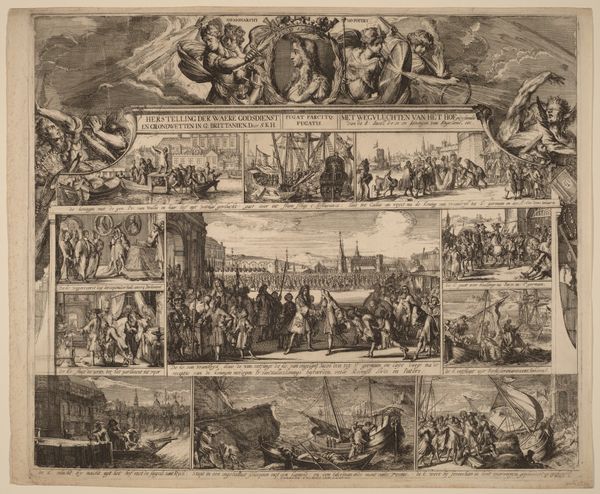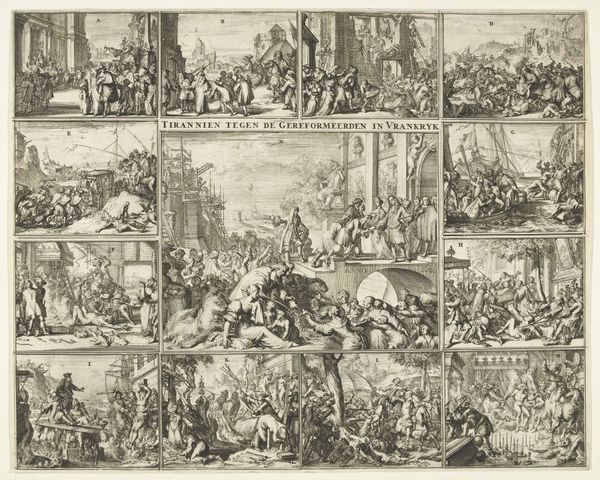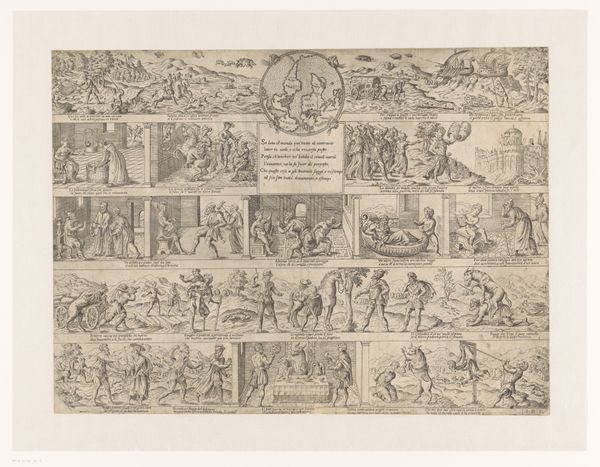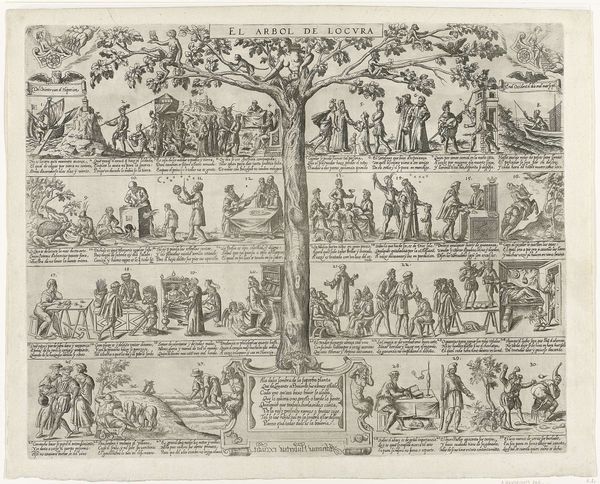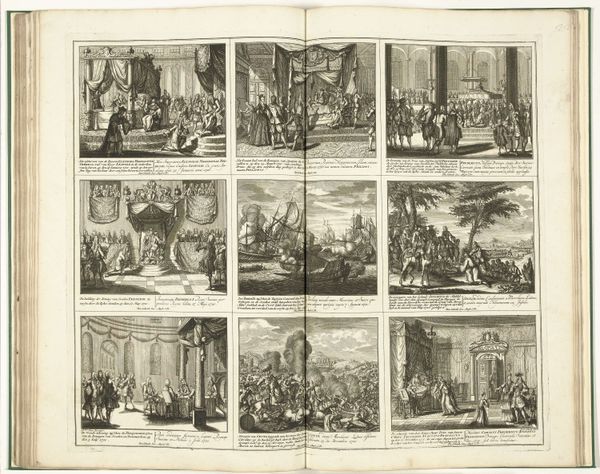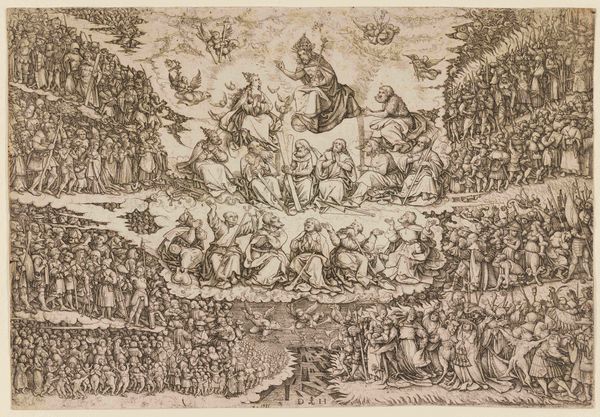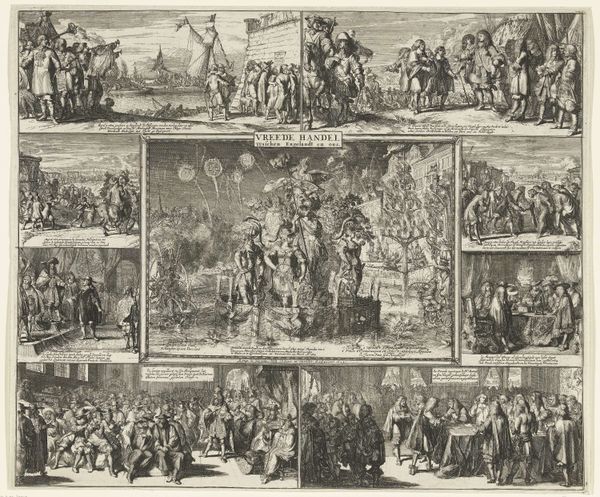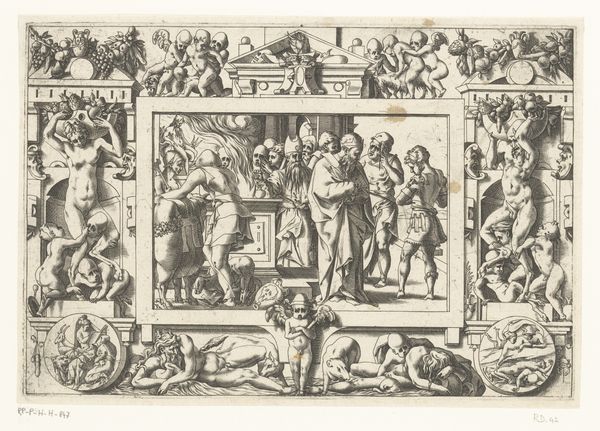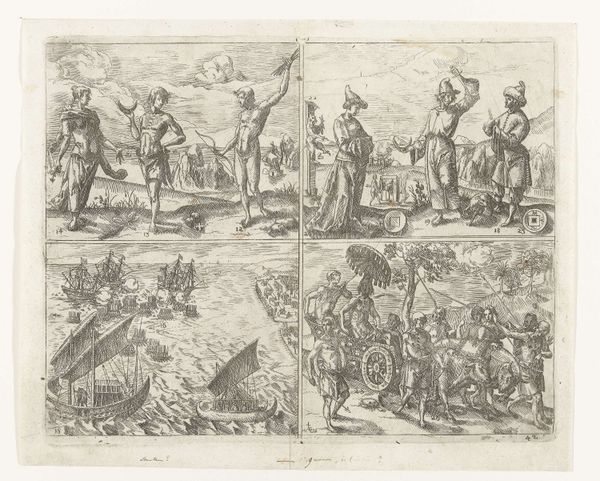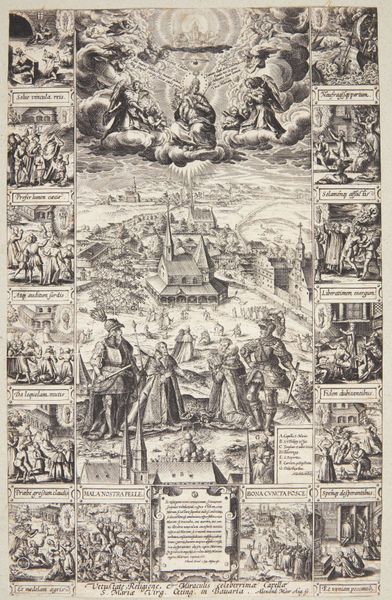
Vervolging van de gereformeerden in Frankrijk na de herroeping van het Edict van Nantes, 1685 1685 - 1686
0:00
0:00
print, engraving
#
narrative-art
#
baroque
# print
#
history-painting
#
engraving
Dimensions: height 434 mm, width 529 mm
Copyright: Rijks Museum: Open Domain
Editor: This engraving from 1685-1686, titled "Persecution of Protestants in France Following the Revocation of the Edict of Nantes," depicts several scenes of violence and oppression. I find the compilation of vignettes around the central image particularly striking and unsettling. How should we interpret a work like this that has such clear propagandistic aims? Curator: Well, the engraving is an excellent example of art being used as a form of social commentary and political tool. What do you notice about the visual language employed in each panel? How does it convey its message to viewers, specifically those outside France? Editor: It seems like the print aims for maximum emotional impact – a chaotic style to incite strong feelings. There's torture, families being torn apart… It all appears designed to evoke a sense of outrage and injustice. Does the intended audience affect the style here? Curator: Precisely. The target audience would likely be other Protestant nations. Images such as this served to demonize Louis XIV’s regime. Prints were easily disseminated and shaped public opinion against the French crown. The engraving functions as visual propaganda. How do you think the use of history in this context manipulates public perception? Editor: I guess that by depicting these scenes of persecution, the artist wants viewers to feel an immediate sense of urgency and a need for intervention, simplifying the conflict and encouraging support for the Protestant cause. But how can we be sure about the accuracy of this account? Curator: That's where critical engagement is crucial. Historical context helps us understand the social and political biases influencing the print’s creation. Consider its purpose within the larger power struggles and religious tensions of the time. What is its function rather than absolute fidelity to events? Editor: It’s a reminder that even art presented as historical truth can be deeply shaped by its social context and aims. Curator: Exactly. This piece underlines how visual imagery plays a pivotal role in shaping our understanding of historical narratives.
Comments
No comments
Be the first to comment and join the conversation on the ultimate creative platform.
